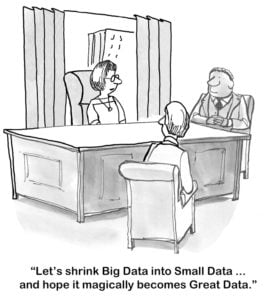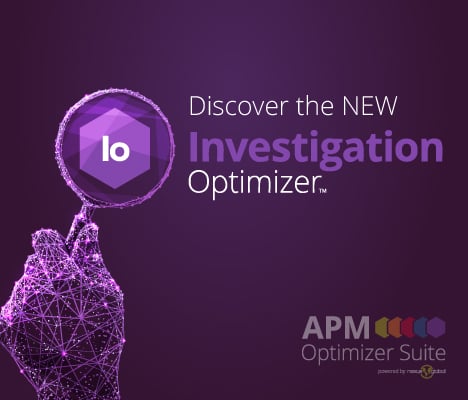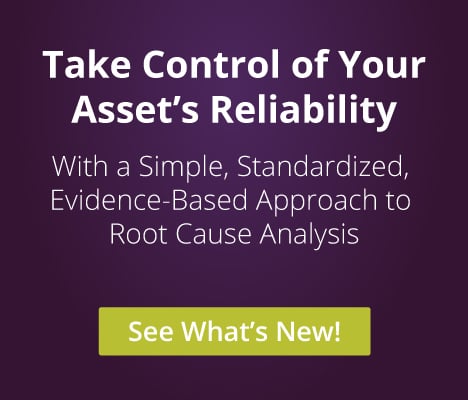Who’s Your Data?
Asset taxonomy combined with nomenclature data (metadata) and performance data along with asset health information are some of the important inputs used in making decisions and setting priorities for asset management. This is today's digital world of asset management. When information is accurate and relevant, better decisions are made. However, in such a competitive environment, poor data and data management systems limit the ability of managers to achieve the best outcomes from their operations.
 In the current data world, I am amazed by the lack of validation on whether the data is good or poor. Good data outputs need to start with good data inputs. Here we can reference the adage…‘garbage in, garbage out.’ In particular, I am now speaking to physical assets in industry, but could apply to other source data as well. Who’s the keeper of master data as it relates to equipment within a facility? Who allows decisions to be made from output data without knowing the quality of source data? So, “Who’s Your Data” cop? Can you answer these questions? Most people stop to think and realize the aha moment. We really don’t have a process standard or a system that allows for self-policing or management of plant nomenclature data and the equipment taxonomy. That’s right, plant nomenclature data.
In the current data world, I am amazed by the lack of validation on whether the data is good or poor. Good data outputs need to start with good data inputs. Here we can reference the adage…‘garbage in, garbage out.’ In particular, I am now speaking to physical assets in industry, but could apply to other source data as well. Who’s the keeper of master data as it relates to equipment within a facility? Who allows decisions to be made from output data without knowing the quality of source data? So, “Who’s Your Data” cop? Can you answer these questions? Most people stop to think and realize the aha moment. We really don’t have a process standard or a system that allows for self-policing or management of plant nomenclature data and the equipment taxonomy. That’s right, plant nomenclature data.
It is mostly assumed this is entered by somebody in some system and it magically appears like bugs in software. The greatness of the magic is no one takes accountability for it, therefore it is not important or it will never get the attention that the output data gets. Having an accurate and consistent hierarchy and taxonomy is the foundation on which to build information systems. Data collection costs money and requires the support of a range of stakeholders in the operation – including the operators of the equipment. Systems need to be simple, efficient, and easy to integrate; but more importantly, strategic in choosing which data is collected.
Let’s get it right from the start instead of analyzing loads of data on the output side with low confidence we are doing the right thing. When we analyze output data, we are about to make decisions based on data that has an unknown quality starting point. I will also point out that too much emphasis is put on the “Big Data” analogy, when in actuality we don’t know how good the big data really is.
How about cloud computing and data sharing warehouses? Wow, all sounds cool and exciting and more and more people are jumping on-board with this. Eventually we won’t have a choice as the world is moving to the cloud, but it doesn’t mean it makes the starting data any less significant. There is no cloud that can replace the people element of the data collected from the equipment nomenclature or arrange information from the taxonomy to find some specific element of equipment. When looking at physical asset management, nomenclature data is the starting data to equipment reliability management and taxonomy is the arrangement of data for searching capability.
Imagine shopping on Amazon without the search function. We see categories like electronics, clothes, etc., we elect to click on electronics, it populates every piece of electronics that exists on Amazon, and we scroll through hundreds of pages of data before we find the one thing we want. The thought of that is exhausting and I personally would give up on the search. This is what we are referencing as the taxonomy; organization of data in buckets for easy search.
Now, nomenclature data is all the characteristics of the item. With nomenclature data, we capture all the information from the tag of that equipment which could be a serial number, model, voltage, etc. Taxonomies enable users to discover content. This differs a bit from nomenclature data (metadata), which generally helps users find content. Metadata helps a user who needs imagery of a specific product. They can search for the product SKU or product ID. But if they just need a type of product, say electric motor or an image of an electric motor connected to a swimming pool pump, a taxonomy will lead them to related results. Makes sense, right?
In summary, without a structure from the start, assets will quickly be misplaced, hence defeating the solution’s purpose entirely. Physical asset management will require systems, processes, and people which are all interdependent on one another. So where do we start now when we're already down the road with our physical asset management program? Start simple, let’s do some data audits with a Data Optimizer tool to satisfy our suspicions or at least validate the quality.
Topics: ciostory, Data Management, Article

Posted by
Larry Olson | CMRP, CRL, CAMA
CEO, Nexus Global | Larry is one of the leading global Shutdown/Turnaround, Asset Integrity, and Maintenance strategists. With over 30+ years of business & maintenance experience, he has carried out a variety of roles from Project Manager, Change Management Specialist to Director of Reliability & Integrity Assurance Excellence.



